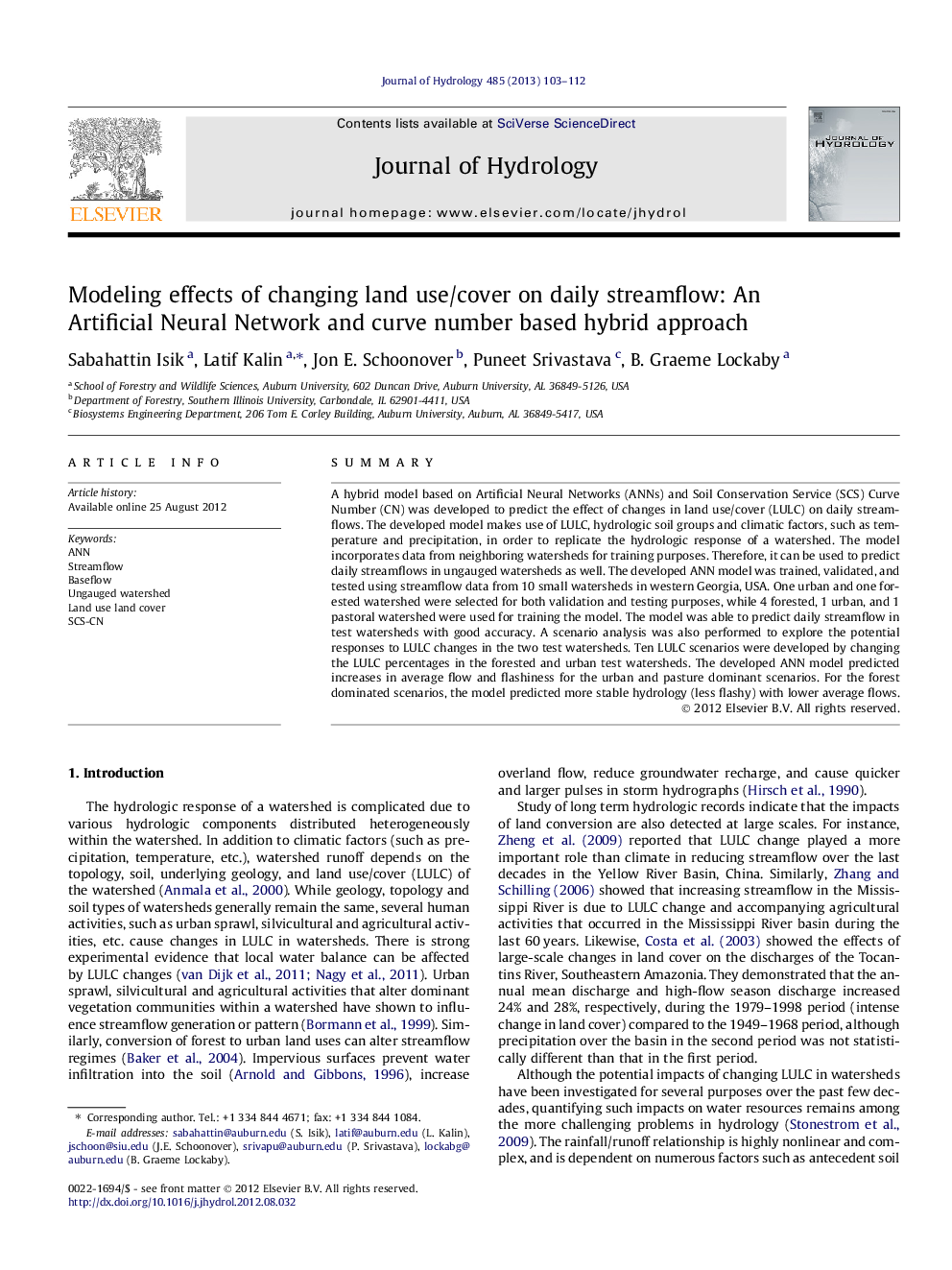| Article ID | Journal | Published Year | Pages | File Type |
|---|---|---|---|---|
| 4576431 | Journal of Hydrology | 2013 | 10 Pages |
SummaryA hybrid model based on Artificial Neural Networks (ANNs) and Soil Conservation Service (SCS) Curve Number (CN) was developed to predict the effect of changes in land use/cover (LULC) on daily streamflows. The developed model makes use of LULC, hydrologic soil groups and climatic factors, such as temperature and precipitation, in order to replicate the hydrologic response of a watershed. The model incorporates data from neighboring watersheds for training purposes. Therefore, it can be used to predict daily streamflows in ungauged watersheds as well. The developed ANN model was trained, validated, and tested using streamflow data from 10 small watersheds in western Georgia, USA. One urban and one forested watershed were selected for both validation and testing purposes, while 4 forested, 1 urban, and 1 pastoral watershed were used for training the model. The model was able to predict daily streamflow in test watersheds with good accuracy. A scenario analysis was also performed to explore the potential responses to LULC changes in the two test watersheds. Ten LULC scenarios were developed by changing the LULC percentages in the forested and urban test watersheds. The developed ANN model predicted increases in average flow and flashiness for the urban and pasture dominant scenarios. For the forest dominated scenarios, the model predicted more stable hydrology (less flashy) with lower average flows.
► Hybrid model based on Artificial Neural Networks and SCS Curve Number was developed. ► Model predicted daily flows in two test watersheds with good accuracy. ► Effect of land use/cover change on hydrology assessed. ► Simulation results predicted increased flow and flashiness under urbanized scenario. ► For forest dominated scenarios more stable hydrology was predicted.
